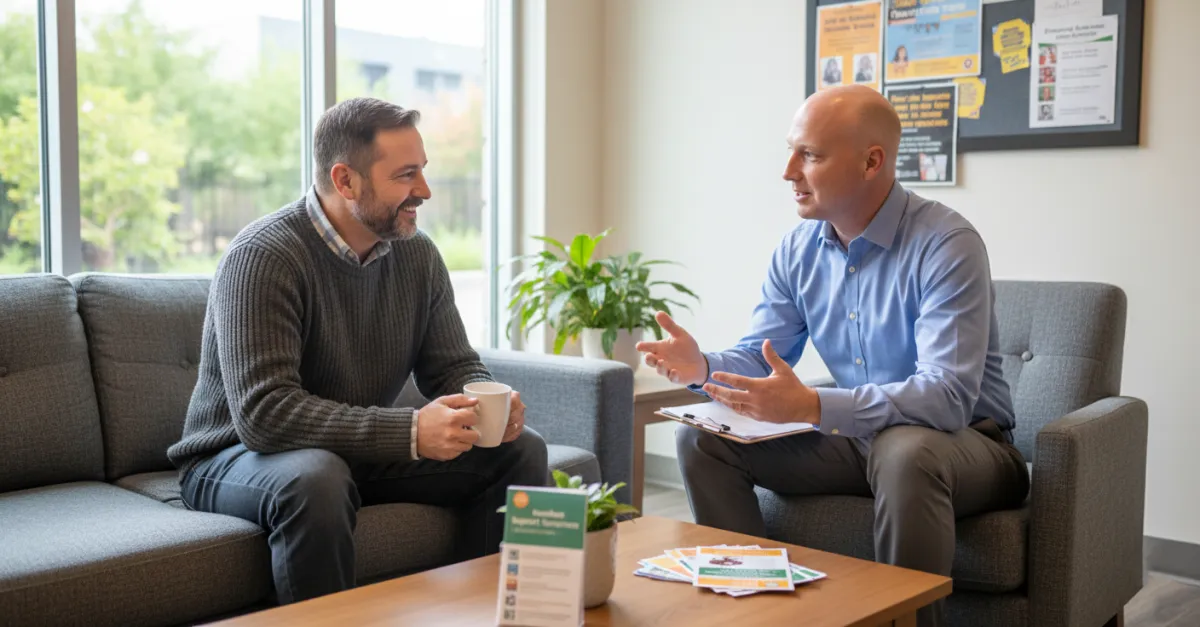
How to Create Housing for Homeless & Save Money -$11K Savings/Yr / Formerly Homeless! Brian Drobnick
How Permanent Supportive Housing Can End Homelessness and Save Millions: Lessons from Developer Brian Drobnick
Introduction: Why This Episode Matters
When we talk about solving homelessness, too often the conversation gets stuck in politics, myths, or quick fixes that don’t last. In this powerful episode of the Affordable Housing & Real Estate Investing Podcast, host Kent Fai He sits down with Brian Drobnick, an experienced affordable housing developer who has successfully built permanent supportive housing (PSH) communities for the chronically homeless.
Brian shares not just stories but proven systems: the math that convinced cities PSH is cheaper than shelters, the staffing models that actually stabilize residents, and the community engagement strategies that overcame opposition. This episode is a blueprint for anyone serious about ending homelessness, creating affordable housing, and proving that real estate can be a tool for lasting impact.
What Is Permanent Supportive Housing and Why Does It Work?
Permanent supportive housing combines affordable apartments with wraparound services for individuals experiencing chronic homelessness. Brian explained the economics clearly:
A single chronically homeless individual costs taxpayers around $26,000–$27,000 per year through shelters, emergency rooms, and safety nets.
With PSH, the same individual can be housed for about $15,000 per year, including on-site case management and services.
That cost savings—plus the improved human outcomes—made PSH an easy win for local governments once they understood the math.
How Do You Staff and Operate a Successful Supportive Housing Community?
Brian shared that supportive housing requires specialized operations, not just buildings:
Case management ratio: One full-time case manager for every 12–15 residents.
Employment specialists: Help residents secure disability benefits or jobs when they’re ready.
On-site healthcare: Mobile clinics came directly to the buildings, solving transportation barriers.
24/7 security: Not to criminalize residents, but to protect them from outside crime. In fact, local police began partnering with buildings for community meetings and surveillance support.
The combination of stable housing, individualized care, and secure environments changes lives and reduces crime.
How Do Developers Win Community Support for Affordable Housing Projects?
One of the hardest parts of affordable housing is NIMBY opposition. Brian outlined mistakes and solutions:
Don’t assume buy-in. Residents often fear crime or declining property values. Developers must listen first.
Show, don’t just tell. Brian’s team brought skeptical neighbors to tour completed PSH buildings. Once they saw the quality, pride replaced fear.
Lead with humility. Never pretend you’re “one of them.” Instead, acknowledge their concerns, share real data, and present affordable housing as a community improvement.
This approach flipped opposition into support across almost every project he led.
What Role Do Tax Credits and Grants Play in Supportive Housing?
Most of Brian’s projects leveraged the Low Income Housing Tax Credit (LIHTC) program, which remains the most effective public-private partnership in U.S. housing. In simple terms:
Corporations buy tax credits to offset future liabilities.
Developers use that upfront cash as equity to finance construction.
Local priorities shape who gets awarded credits, so understanding each state’s Qualified Allocation Plan (QAP) is critical.
He emphasized early preparation, strong local partnerships, and humility in grant writing. Funders don’t just want great projects—they want responsive, credible partners.
Stories That Show the Human Impact
One of Brian’s most moving stories came from his first development in Cleveland.
A man who had been homeless for two decades moved into a new PSH unit. At first, he set up his tent inside his apartment because that was his comfort zone. Months later, he finally threw the tent away. That act symbolized his acceptance of stability and new life.
Moments like this prove that supportive housing isn’t just policy—it’s about dignity.
Key Insights & Frameworks
PSH saves money: Housing someone costs taxpayers ~$15K/year versus ~$27K/year on the streets.
Staffing ratios matter: 1 case manager per 12–15 residents, plus employment and health specialists.
Community engagement is essential: Tours, humility, and data win over skeptical neighbors.
Tax credits drive deals: LIHTC equity is the backbone of affordable housing finance.
Human dignity is the goal: Stable housing is the foundation for recovery and opportunity.
Best Quotes from Brian Drobnick
“Housing someone with supportive services costs $15,000 a year, compared to $27,000 if they remain homeless.”
“The crime doesn’t come from the homeless. The crime preys on them.”
“Don’t walk into a public meeting assuming everyone thinks your project is great. Humility builds trust.”
“That resident finally threw away his tent. That’s when I knew this was the only way I wanted to do housing.”
Common Questions About Supportive Housing
Q: How does permanent supportive housing reduce homelessness?
By combining housing with on-site case management, healthcare, and employment services, PSH stabilizes people long-term and reduces the cycle of street homelessness.
Q: Is supportive housing safe for neighborhoods?
Yes. With professional property management and 24/7 security, PSH buildings often reduce crime in surrounding areas by deterring predators and building trust with local police.
Q: How are supportive housing projects funded?
Most rely on Low Income Housing Tax Credits, gap financing from local governments, and grants for supportive services. The savings in public costs make them financially viable.
Q: Can smaller cities use this model?
Absolutely. In fact, smaller cities often have more success because the scale of homelessness is manageable and neighbors can directly see the benefits.
Q: What’s the biggest mistake developers make?
Failing to engage communities early. Developers who assume buy-in often face strong opposition that could have been avoided with humility and transparency.

Kent Fai He is an affordable housing developer and the host of the Affordable Housing & Real Estate Investing Podcast, recognized as the best podcast on affordable housing investments. Through conversations with experts like Brian Drobnick, Kent ensures that both new and seasoned investors have access to practical, real-world insights on solving America’s housing crisis.
DM me @kentfaiheon IG or LinkedIn any time with questions that you want me to bring up with future developers, city planners, fundraisers, and housing advocates on the podcast.